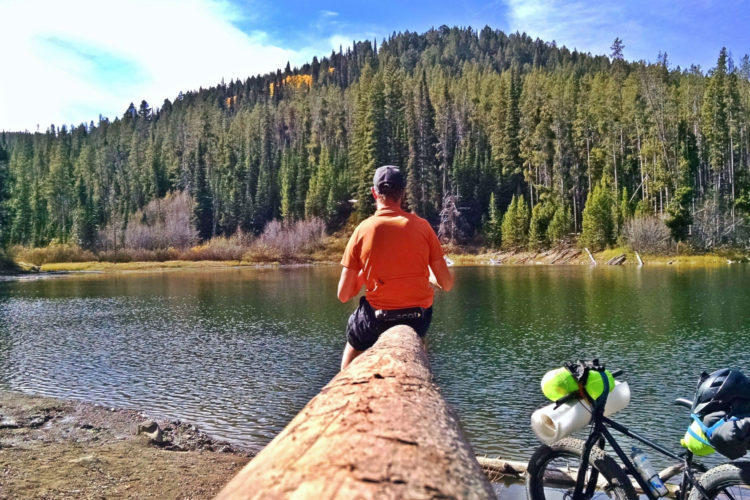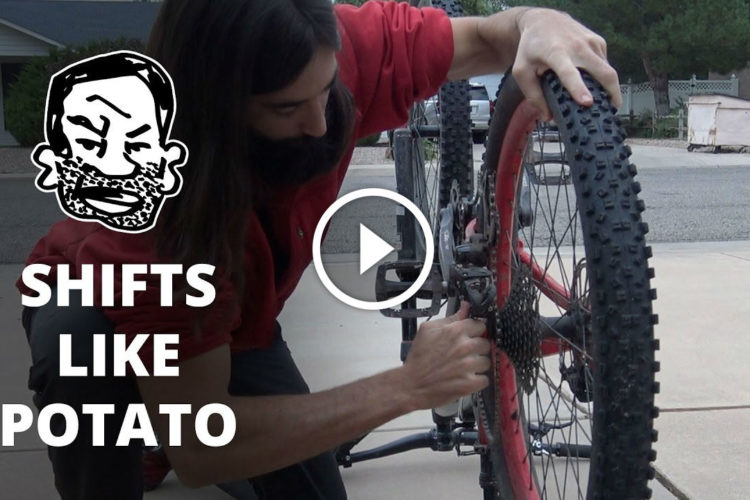
Dirt racing can be loads of fun, and I highly encourage trying a little time between the tape if you are at all curious. Mountain bike races have allowed me to meet new people, check out new trails, push my body and my gear to their true limits, gain fitness and focus, and to learn about myself in my most animalistic state. The after-party is often worth the effort, even if the race doesn’t go so well.
[see_also id=’183128′]
Proper race preparation can help you remain calm before the event, spending your energy chatting with friends or getting in your zone, rather than wondering where you left your shoes. This and successive race-prep articles will serve as a list that you can add to or individualize to make your race day as successful as possible.
First, we will collect most of the items you need to carry during a one day enduro race. Many of these are also necessary for an XC race, with a couple of protective gear exceptions.
On your body

These lists include gear for scouting trails the day before an event and nearly everything you could need to get through a race. Doubling up on a few of these items in case your buddy forgets something can really make someone’s day.
Warm weather
- 1 back protector vest or armored backpack (mandatory for most enduros)
- 1 pair of kneepads (mandatory for most enduros)
- 1 full face helmet (mandatory for most enduros)
- 2 jerseys (add a third if you plan to podium)
- 1 pair of MTB shoes
- 2 pairs of liner shorts
- 2 pairs of gloves
- 3 pairs of socks
- 1 pair of goggles with a set of clear and tinted lenses
- 1 microfiber lens cleaner
- 1 pair of sunglasses
- 2 pairs of contact lenses, or extra glasses, if necessary
- 1 packable rain jacket. You may wake up to rain on race day, or temps cool enough that you want to be warm while waiting at the top for your start.
If you race when it is cold and want to continue doing so, preparation is key. Having the right gear to stay warm during the race, and to reheat afterward, will make the whole experience more pleasurable.
[see_also id=’244522′]
Cold weather and/or rain
- 2 wool base layers
- 2 rain jackets
- 2 pairs of waterproof riding pants
- 3 pairs of gloves, one being a heavy waterproof pair
- 4 pairs of wool socks
- A second dry pair of riding shoes if possible
- Warm, post-race hat
- Warm, post-race clothing, including your warmest shoes and hat
- A blanket, to change under and warm up with
- Something to stand on while you change out of wet clothes

In three pockets
My back protector has three pockets that I like to stuff the night before the race. You can make a modified list for your XC jersey pockets, hip bag, or backpack.
- Cellphone in a plastic case for emergency calls
- More calories than you typically need for a similar length ride. I prefer not to depend on aid stations being properly stocked, and instead bring my own nutrition.
- An extra bit of sugar in case you or a fellow racer is running low on calories
- Identification, in case you get hurt
On the bike
Racers want to keep their bikes as light as possible on race day because minimizing the amount of gear being hauled could make the difference between standing on the podium or sitting in the crowd. To be competitive, riders often need to take risks in terms of what to pack and what to leave in the car. Every rider is different in terms of their risk tolerance, so the list below seeks to strike a balance between being reasonably prepared and being over-prepared.

- 1 tube and 2 tire levers (2 tubes in rockier races)
- 1 CO2 cartridge and inflator (2 cartridges in rockier races)
- 1 small pump (only if there isn’t one available at the end of the stages)
- 1 spare derailleur hanger
- 1 quick (chain) link
- 1 tubeless tire repair tool, 2 tire plugs
- 1 multitool with chain breaker
- 1 emergency sugar/de-bonker (in addition to other food)
- 1 water bottle
As an extreme example, consider the idea of stuffing an extra tire in your pack. Sure, it could come in handy if you slash a tire, but by the time you make the swap, you’re out of contention anyway. And if you don’t need to use the spare, you’re just slowing yourself down and taking yourself out of the race in a different way.
Packing for a race is different from packing for a backcountry ride, and while self-sufficiency is important in both cases, race environments are generally more controlled.

Stay tuned for more race preparation articles as the season nears. We will cover specific event logistics preparation, bike and component checklists, what spare parts to pack, and what tools to bring.
Is there a race preparation story you would like us to cover? Let us know below.





















1 Comments
Feb 26, 2019